|
In This Issue...
- An Interview with Dr. Yasuo Sakuma
- In the Field with Dr. David E. Moorman
- Hobby Much?
- Traveling to IBNS 2017: Conference Tips
- Japanese Basics
- Trending Science
- Member News
An Interview with Dr. Yasuo Sakuma
by Rastafa I. Geddes
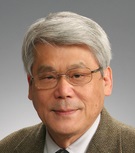 Note: Yasuo Sakuma, M.D., Ph.D. will be a keynote speaker at the 2017 IBNS Annual Meeting in Hiroshima, Japan. Dr. Sakuma's biography and response to interview questions are summarized below. Specialties: Research in reproductive neuroendocrinology, brain sex differences, brain regulation of sexual behavior. Read a brief bio HERE. Note: Yasuo Sakuma, M.D., Ph.D. will be a keynote speaker at the 2017 IBNS Annual Meeting in Hiroshima, Japan. Dr. Sakuma's biography and response to interview questions are summarized below. Specialties: Research in reproductive neuroendocrinology, brain sex differences, brain regulation of sexual behavior. Read a brief bio HERE.
Ras: Thank you for agreeing to this interview. Dr. SAKUMA, being a M.D., University Professor, Reproductive & Neuroendocrinology researcher, and a consultant to the research industry, you wear man hats. How do you describe all you do to the lay person or someone with minimal biomedical education?
YS: Well, I learned at a medical school, but I was never an ardent student on clinical medicine; rather, my interest was focused on human biology, among others, brain mechanism for human behavior. After medical school, I joined graduate school to learn human physiology at Professor Kawakami’s laboratory in Yokohama, where I learned electrophysiology of neurons in the hypothalamus, a brain structure responsible for the regulation of autonomic, endocrine functions and instinctive behavior. Thus, despite a medical doctor (M.D.), I was never trained as a physician nor did any practice, per se. My thesis in Japanese was entitled “Electrophysiology of Hypothalamic Neurosecretory Cells”. I was lucky to have had a chance to do my postdoc work at Prof. Donald W. Pfaff’s laboratory at Rockefeller, which led me to studies to understand sex-specific hormone-dependent behavior in the rat. Since then, my interest on sex hormone actions on the brain and brain regulation of reproductive endocrinology and behavior keeps on.
I consider myself as a scientist, in which researcher, educator or industry adviser can be accommodated within a person comfortably without conflicts. In that sense, I was not wearing many hats until very recently. The Administrative position at a newly established small university has given me a different hat. It is quite different from running a physiology laboratory with 20-25 staffs, or in a committee running research institutions, both of which shared similar scientific interest and target. I enjoyed experiments and scientific discussions, preparation for presentations and writings. For a president of a university, a major job is to run mundane activities smoothly with the help of administrative staffs for the benefit of all students. It’s a full-bodied, tough job and deprives me of margin of time to contemplate the current issue in my research field.
Ras: As a university president/professor and curriculum designer your views on education shape the minds of future doctors and scientists. Should universities decrease classroom time, in favor of, increase clinical/lab exposure, during undergraduate education? Is it important that Graduate students and Post-doctoral fellows mentor undergraduates? Should University Researchers have mandatory teaching requirements?
YS: A 1500-year-old aphorism, “standing on the shoulder of giants” or “discovering truth by building on previous discoveries" is appropriate particularly to biomedical sciences, when taught in undergraduate classes. Classroom time is important to absorb and reassemble established facts (preferably by students’ own initiative). Without fundamental knowledge, early clinical/lab exposure may motivate students to certain topic (positive) but at the same time may warp their mind like vocational education (negative for creativity). Of course, breakthroughs do not come from previous discoveries, thus, my answer to this question is “keep class room time and increase clinical/ bench modestly”. I agree it is important for Graduate students and Post-doctoral fellows to mentor undergraduates and learn how to educate immediate next generation of scientists. From my experience, good researchers are always good teachers. They should have teaching opportunities, may be on their specialty and it should not be mandatory.
Ras: The “World you learn in” is differ from the “World you earn in”, and you have successfully built a scientific career crossed decades and disciplines. What is the most important idea or action that has contributed to your longevity as a Physician/Reproductive Neuroendocrinologist and how does one successfully navigate multiple disciplines?
YS: It’s my curiosity and many friends who supported me. First, I entered the field of Neuroendocrinology on behavioral assessment or lordosis reflex; that lead to electrophysiological anatomy of the neural circuitry for that reflex, then the question arose whether estrogen alters the excitability of that circuitry (yes, it did). Excursion into path clamp technique identified molecular basis of the excitatory change (changes in ion channel expression). I was lucky to have had a large laboratory with many friends with different disciplines, enough financial support from my institutions, in particular, Nippon Medical School and Japanese government agencies (notably, JSPS). My wife, a pediatrician, is largely responsible to keep me going in the “World you earn in”.
Ras: What was your first scientific investigation?
YS: When I crossed the threshold of entrance of Professor Kawakami’s Laboratory at Yokohama. I was 20, and in the first year in medical education (Japanese system at that time, had 2-year pre-med course followed by 4-year in medicine). Prof. Kawakami taught me basic endocrinology in person, and gave me a chance to conduct preliminary electrophysiological experiments.
Ras: You and your research team recently, elucidated the structural and functional features of novel C-terminally truncated ERα variants and revealed the mechanisms underlying constitutive transactivation by C-terminally truncated nuclear receptor variants http://www.sciencedirect.com/science/article/pii/S0303720716300260. What does this mean on a functional level? Speaking as a physician, are there diagnostic or prognostic benefits to understanding this mechanism during puberty or other reproductive stages of life?
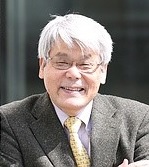 YS: Indeed, two recent articles (Day FR et al: Physical and neurobehavioral determinants of reproductive onset and success. Nat Genet 2016; 48(6): 617-6222. doi: 10.1038/ng.3551 & Perry JR et al: Parent-of-origin-specific allelic associations among 106 genomic loci for age at menarche. Nature 2014; 514(7520): 92-97. doi: 10.1038/nature13545) describe many SNPs in estrogen receptor (ER) gene which affects onset of puberty or the time of first sexual intercourse. The effects can be direct or secondary to altered susceptibility to environmental factors such as nutrition, but the results definitely show that the existence of genetic backgrounds. It is highly likely that aberrant ER gene may somehow contribute to praecox menopause or polycystic ovary syndrome. Furthermore, based on our own studies that ER plays critical role in the sexual development of the rodent brain, there are so much implications of higher brain function and disease. YS: Indeed, two recent articles (Day FR et al: Physical and neurobehavioral determinants of reproductive onset and success. Nat Genet 2016; 48(6): 617-6222. doi: 10.1038/ng.3551 & Perry JR et al: Parent-of-origin-specific allelic associations among 106 genomic loci for age at menarche. Nature 2014; 514(7520): 92-97. doi: 10.1038/nature13545) describe many SNPs in estrogen receptor (ER) gene which affects onset of puberty or the time of first sexual intercourse. The effects can be direct or secondary to altered susceptibility to environmental factors such as nutrition, but the results definitely show that the existence of genetic backgrounds. It is highly likely that aberrant ER gene may somehow contribute to praecox menopause or polycystic ovary syndrome. Furthermore, based on our own studies that ER plays critical role in the sexual development of the rodent brain, there are so much implications of higher brain function and disease.
Ras: In the Aging-related disease research field, some of us, believe that there is a predictive link between the onset of puberty, subsequent menopause/andropause and lifespan? Care to comment?
YS: I agree. Early onset of puberty (v.s.) would results in early depletion of viable ova, followed by early menopause etc. Decline in DHEA or testosterone secretion, either by central or testicular origin, will cause andropause. The lifespan, however, I don’t know.
Ras: You consult for several international private companies and have had seminal work coming out of Japan and The Rockefeller University in the USA for decades, and thereby exemplify what an IBNS member should be. Can you tell our IBNS readers of any lessons you may have learned from working in one Institution that you otherwise would not have gained from the other?
YS: I moved my work 7 times, which is exceptional in Japan in my age group. Each time, I accumulated teaching experiences, learned new techniques from new colleagues, set up laboratories at shoestring budget (in Japan, we only had funded sufficiently for the last 20-25 years; it’s drying up again in these days as Nature reports today, 23 March 2017). I owe a lot to Postdoc training at Prof. Donald W. Pfaff’s laboratory at The Rockefeller University, which provided me both scientific knowledge and culture. I urge young scientists strongly to get out their home ground and spend some time as a stranger in different culture.
Ras: Where does “Family Life” fit into all we have discussed thus far?
YS: I and my wife were too excited to pursue each one’s profession and did not shared “family life”. That is what we remorse in these days and are trying to compensate.
Ras: Thanks for your time and to conclude please fill in the following sentence with 3 to 5 words:
Dr. Sakuma is…YS: scientist, teacher, friend.
Dr. Sakuma would like to be remembered for…YS: his work on sexual behavior, estrogen, GnRH, brain sex difference
Bio: Yasuo Sakuma was born in Kamakura, Japan, on December 3, 1946. Dr. Sakuma is a renowned physician and endocrinologist most noted for his reproductive neuroendocrinology expertise and has been involved in studies on female rat reproductive behavior with an interest elucidating the neural basis for sexual motivation by focusing on the cellular physiology of GnRH neurons as a mechanism for the onset of puberty, and neural actions of the reproductive hormone estrogen. This work is highlighted in 207 peer-reviewed publications, 2 Book Chapters, 3 Conference papers and cited more than 4,720 times in similarly peer-reviewed scientific publications (https://www.researchgate.net/profile/Yasuo_Sakuma/publications).
Dr. Sakuma is a member of The Physiological Society of Japan, Japan Endocrine Society, Japan Neuroscience Society, The Physiological Society (U.K.), American Physiological Society, Society for Neuroscience, International Society of Neuroendocrinology, and Society for Behavioral Neuroendocrinology. He served as the Editor-in-Chief of The Journal of Physiological Sciences (2005- 2013), the organ of The Physiological Society of Japan http://www.springer.com/12576.
Dr. Sakuma received an M.D. in 1971 and a Ph.D. in 1975, both from Yokohama City University. The Positions he held include Research Associate, Department of Physiology, Yokohama City University, Yokohama, 1975; Assistant Professor, Division of Physiology and Behavior, Behavior Research Institute, Gunma University School of Medicine, Maebashi, 1976; Postdoctoral Fellow, The Rockefeller University, New York, 1976; Visiting Associate Professor, The Rockefeller University, New York, 1978; Associate Professor, Department of Physiology, Niigata University School of Medicine, Niigata, 1981; Professor & Head, Department of Physiology, Hirosaki University School of Medicine, Hirosaki, 1988; Professor & Head, Department of Physiology, Nippon Medical School, Tokyo, 1993-2012. He is currently the President of The University of Tokyo Health Sciences, which nurtures promising physical and occupational therapists with a 4-year curriculum. He is a Professor Emeritus at Nippon Medical School, and an Adjunct Professor at The Rockefeller University. He served as a Counselor at the National Institutes of Natural Sciences Administration of Japan (2013-2014). Orchid: http://bit.ly/1jQ2jRR ; http://research-er.jp/researchers/view/112995 (in Japanese).
If you would like to offer any suggestions, ask questions, or to otherwise open a dialogue with Dr. Sakuma, he invites you to email him at: [email protected].
In the Field with Dr. David E. Moorman
 Research Summary: The Moorman lab is interested in characterizing the neural systems underlying complex behaviors, in particular motivation and executive function. We are interested in how these systems function normally as well as how they are dysregulated in psychiatric disease (such as addiction, depression, ADHD, and compulsive behaviors). We study these systems using techniques such as electrophysiology, optogenetics, pharmacology, and cellular imaging in awake, behaving animals to establish a relationship between nervous system function and behavior. ARE YOU INTERESTED IN LEARNING MORE ABOUT DAVID’S WORK? VISIT http://moormanlab.org/ Research Summary: The Moorman lab is interested in characterizing the neural systems underlying complex behaviors, in particular motivation and executive function. We are interested in how these systems function normally as well as how they are dysregulated in psychiatric disease (such as addiction, depression, ADHD, and compulsive behaviors). We study these systems using techniques such as electrophysiology, optogenetics, pharmacology, and cellular imaging in awake, behaving animals to establish a relationship between nervous system function and behavior. ARE YOU INTERESTED IN LEARNING MORE ABOUT DAVID’S WORK? VISIT http://moormanlab.org/
Recent Publications:
Moorman D.E.*, James, M.H.*, Kilroy, E.A., Aston-Jones G. Orexin/hypocretin-1 receptor antagonism reduces ethanol self-administration and reinstatement selectively in highly-motivated rats. Brain Res. 2017 1654:34-42.
Moorman D.E. and Aston-Jones G. Prefrontal neurons encode context-based response execution and inhibition in reward seeking and extinction. Proc. Natl. Acad. Sci. 2015. 112(30):9472-7.
Expert Advice for Before IBNS 2017: Prepare everything as much in advance as possible. Give yourself plenty of time to rehearse your talk or poster. Make a priority list of things you’d like to see and people you’d like to meet or interact with. Make some dinner plans ahead of time so you aren’t scrambling last-minute.
During IBNS 2017: Take lots of notes, not only on what you see, but on ideas that you have, potentially inspired by the meeting. Be sure to interact with your fellow behavioral neuroscientists – meet some new people. Spend time at posters talking to the presenter. Many great collaborations are made at conferences. Take an occasional break so you don’t burn out – sightsee, get some exercise, or just relax. And have fun, both scientifically and socially!
After IBNS 2017: Go over your notes and follow up on contacts you’ve made. Don’t let new friends and colleagues disappear after the meeting. Get into the lab and turn those great ideas that you had during the conference into results.
David’s First Research Experience was: In high school, I worked in Charles Derby’s lab at Georgia State University doing lobster chemosensory research. It was an awesome experience, they were very generous with me, and I had no idea about what I was doing. I’ve been doing research ever since and I am very grateful to them for being a catalyst in my career.
David’s Best Advice/ Biggest regret is: It’s hard to give advice broadly since there are so many interests and routes to success. I suppose I would generally say, do work on what you’re most motivated by and passionate about. This isn’t sufficient, but it’s definitely necessary. Based on my experiences, I’d also say to remember that plans can change and it’s OK to change your research direction or interests. A final piece of good advice is to “be excellent to each other,” in science and academia and in life in general.
Dr. Moorman’s Ultimate Goal is to: Keep doing better and better work, make discoveries that are important and maybe even helpful to the community, and train my mentees to go on and do the same.
Hobby Much?
Picture perfect. I guess you can say that my scientific curiosity started early, because even as a kid I was fascinated by the natural world. I loved going camping with my family in our rambler of an RV, and vividly remember seeing the Rocky Mountains, the ruins of Mesa Verde, and the extraordinary geological 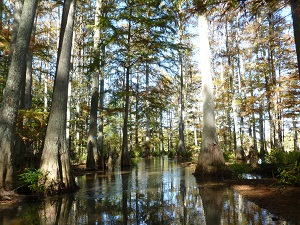 wonders of Yellowstone during one of our summer family excursions. I have continued this love of being out in nature as an adult, and take every chance I can to hike, backpack, or kayak in some (relatively) wild space. I have hiked portions of the Shenandoah’s, the Berkshires, and Acadia National Park in graduate school. In my position, here in Memphis I’ve rarely been able to get away to do some real hiking or backpacking, but there are several great places to kayak here. The Wolf River winds its way through Cypress and hardwood forests, and the trees often grow up in the slower areas of the waterway. There’s also a gorgeous wildlife refuge just over the bridge in Arkansas that offers great birdwatching. Because it’s in the migratory route, the populations change over the seasons, so spring is a time of songbirds, while summer is marked by a chorus of Red Winged Blackbirds. And I always know when it’s the start of fall, as that’s when the Eagles return for their winter nesting here. There’s nothing quite so lovely as floating amongst the trees, watching the Eagles teaching their young to hunt on the lake. wonders of Yellowstone during one of our summer family excursions. I have continued this love of being out in nature as an adult, and take every chance I can to hike, backpack, or kayak in some (relatively) wild space. I have hiked portions of the Shenandoah’s, the Berkshires, and Acadia National Park in graduate school. In my position, here in Memphis I’ve rarely been able to get away to do some real hiking or backpacking, but there are several great places to kayak here. The Wolf River winds its way through Cypress and hardwood forests, and the trees often grow up in the slower areas of the waterway. There’s also a gorgeous wildlife refuge just over the bridge in Arkansas that offers great birdwatching. Because it’s in the migratory route, the populations change over the seasons, so spring is a time of songbirds, while summer is marked by a chorus of Red Winged Blackbirds. And I always know when it’s the start of fall, as that’s when the Eagles return for their winter nesting here. There’s nothing quite so lovely as floating amongst the trees, watching the Eagles teaching their young to hunt on the lake.
 My new position will be in Central Virginia, and within a daytrip for hiking the Shenandoah Mountains. I love the impressive magnitude of the Rockies, but the rolling green of the Appalachian mountain range has long held a special place in my heart. There are a lot of reasons why I’m so very excited about my new position, and being able to go visit the mountains for a day, or weekend, is among the reasons at the top of the list. My new position will be in Central Virginia, and within a daytrip for hiking the Shenandoah Mountains. I love the impressive magnitude of the Rockies, but the rolling green of the Appalachian mountain range has long held a special place in my heart. There are a lot of reasons why I’m so very excited about my new position, and being able to go visit the mountains for a day, or weekend, is among the reasons at the top of the list.
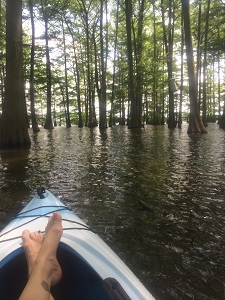 My research, by the way, looks at the ways that exercise moderates the deleterious effects of stress in the brain and research has shown that exercising in nature is particularly beneficial for stress reduction and overall health. In fact, just looking out a window at a natural scene lowers cortisol, and blood pressure. So perhaps it’s not that surprising that my hobbies combine two of my great passions – science, and nature. My research, by the way, looks at the ways that exercise moderates the deleterious effects of stress in the brain and research has shown that exercising in nature is particularly beneficial for stress reduction and overall health. In fact, just looking out a window at a natural scene lowers cortisol, and blood pressure. So perhaps it’s not that surprising that my hobbies combine two of my great passions – science, and nature.
Can YOU guess who I am? (Not sure? See answer in the next IBNS Newsletter, April 2017)
Traveling to IBNS 2017: Conference Tips
by Rastafa I. Geddes
Join the International Behavioral Neuroscience Society (IBNS) for the 26th Annual Meeting on June 26-30, 2017. Where you listen to Leaders and Game Changers in the international behavioral neuroscience field, have the opportunity expand your professional network with one-on-one sit-downs with renown scientists and researchers from all over the world, showcase your own scientific contributions, while visiting a culturally rich society of the eastern hemisphere.
IBNS annual meeting preparation: If I were to give suggestions on preparing an excellent meeting I would recommend Donald McEachrons´ tips published in the Networking section in IBNS Newsletter Volume 20 - Issue 6 September 2016 (with Guest Editor Katherine Wright) for details. In short, some advantages are:
1) Increased awareness of cutting edge research.
2) Better understanding of the reality of research.
3) New opportunities.
4) Mentoring.
5) Becoming known.
In this issue, we expanded on this idea by respectively discussing how to achieve each of these 5 advantages at this year’s upcoming IBNS meeting in Japan.
1) Increased awareness of cutting edge research: Find specific technique(s) you want to learn more about, research the companies attending IBNS 2017, prepare 3-5 questions about the technique to ask when visiting their booth. After IBNS, summarize what your learned and misconceptions dispelled. This will help you determine this techniques usability in your future research. Present this summary/assessment at your next lab and/or to your Principal Investigators (PI).
2) Better understanding of the reality of research: Using the IBNS itinerary application, find specific posters of “technical” interest prior to meeting, research the lab associated with each poster of “technical” interest, prepare 3-5 technical questions to ask the presenter and 3-5 sentences to explain how your own research is about (or may be related to their poster). Again, after IBNS summarize what your learned and present this summary at your next lab and/or to your PI.
3) New opportunities: Research at least two principal investigators (PI) you want to meet or simply learn more about from a personal perspective, then prepare 3-5 questions to ask each PI of interest. At this juncture, personally I like to contact the PI’s (months prior to IBNS meeting) and attempt to schedule a brief chat or sit down during meeting. After IBNS meeting, summarize what your learned from your PI interactions (compare and contrast, any surprises?). Present a summary/assessment of your one-on-one PI interactions at your next lab and/or to your PI.
4) Mentoring: As you advance in your career as a budding International Behavioral Neuroscientist and IBNS member, it is important to be a proactive mentee and serve as an “Evolving” mentor.As McEachron also wrote in Networking, “No one should ever under-estimate how important mentoring is for a young scientist.” The rewards from mentoring and being properly mentored too often than not determine the difference between a long successful, or short fledgling, scientific career. Pre-scheduling meeting times and dates, and making yourself available to other IBNS members, when and where if possible, is important for IBNS and individual success.
5) Becoming known: Good Science and Business Cards.
Japanese Basics
(excerpt from Mami Suzuki's Guide to Bowing in Japan)
First, bow when someone bows to you. This excludes the people who greet you in shops and hand out fliers on the street, but should be pretty fool-proof otherwise.
Second, when in doubt, bow to 30°. This will be acceptable in nearly every situation, as it shows a good balance of respect and familiarity.
Third, use age and titles to determine how long you bow, perform longer bows when bowing to someone of more senior age or position.
If all else fails, simply hold your bow a bit longer than the person you're bowing to or, if you're in a group situation, than the person who is your closest superior.
Trending Science
In this column, we will share the latest research, interesting scientific articles and news you can use.
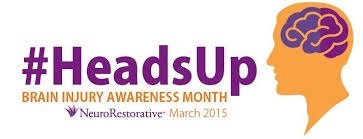 MARCH Is National Brain Injury Awareness (NBIA) Month. National Brain Injury Awareness Month is throughout the month of March and is designed to raise awareness of traumatic brain injury (TBI), as well as the following resources on TBI for families, medical professionals, and military personnel. According to the CDC, each year an estimated 2.5 million children and adults in the United States sustain a traumatic brain injury (TBI), and another 795,000 individuals sustain an acquired brain injury (ABI) from non-traumatic causes. TBIs can affect the functionality of the brain—affecting thinking, reasoning, and memory. Whether the victim is an adult, a child, or an infant, TBIs can have a major impact on individuals and their families. For more visit http://www.nctsn.org/resources/public-awareness/national-brain-injury-awareness-month%20;http://www.twcnews.com/nc/triad/news/2017/03/14/brain-injury-awareness-month--what-you-should-know.html;http://dvbic.dcoe.mil/brain-injury-awareness-month-march-2017. MARCH Is National Brain Injury Awareness (NBIA) Month. National Brain Injury Awareness Month is throughout the month of March and is designed to raise awareness of traumatic brain injury (TBI), as well as the following resources on TBI for families, medical professionals, and military personnel. According to the CDC, each year an estimated 2.5 million children and adults in the United States sustain a traumatic brain injury (TBI), and another 795,000 individuals sustain an acquired brain injury (ABI) from non-traumatic causes. TBIs can affect the functionality of the brain—affecting thinking, reasoning, and memory. Whether the victim is an adult, a child, or an infant, TBIs can have a major impact on individuals and their families. For more visit http://www.nctsn.org/resources/public-awareness/national-brain-injury-awareness-month%20;http://www.twcnews.com/nc/triad/news/2017/03/14/brain-injury-awareness-month--what-you-should-know.html;http://dvbic.dcoe.mil/brain-injury-awareness-month-march-2017.
Researchers identify how inflammation spreads through the brain after injury. This month, Dr. Alan Faden and his research team at the University of Maryland School of Medicine reported that brain inflammatory cell derived microglia were significantly increased in the central nervous system and blood circulation in a rodent model of experimental TBI. The Pro-inflammatory factors in these microglial cells have the potential to stimulate normal immune cells, which in turn makes them a toxin to otherwise normal brain cells (i.e., neurons). According to researchers, this toxic effect of the microglial microparticles began local and spread more distal from the injury site. The clinical importance of these findings, may not be that obvious, but as suggested by Dr. Faden, "The idea that brain inflammation can trigger more inflammation at a distance through the release of microparticles may offer novel treatment targets for a number of important brain diseases." For the news reports read https://m.medicalxpress.com/news/2017-03-inflammation-brain-injury.html; https://www.sciencedaily.com/releases/2017/03/170308081012.htm. For original article read http://onlinelibrary.wiley.com/doi/10.1111/bph.13179/full.
Member News
 The Edward A. Bouchet Graduate Honor Society commemorates the first African American to earn a doctorate degree from an American university (Physics, Yale University, 1876). IBNS Post-doctoral member since 2011, and the Guest Editor of IBNS March 2017 Newsletter, Dr. Rastafa I. Geddes was recently inducted into the University of Wisconsin-Madison Edward Alexander Bouchet Graduate Honors Society on March 14th, 2017 at a local ceremony in Madison. The Edward A. Bouchet Graduate Honor Society commemorates the first African American to earn a doctorate degree from an American university (Physics, Yale University, 1876). IBNS Post-doctoral member since 2011, and the Guest Editor of IBNS March 2017 Newsletter, Dr. Rastafa I. Geddes was recently inducted into the University of Wisconsin-Madison Edward Alexander Bouchet Graduate Honors Society on March 14th, 2017 at a local ceremony in Madison.
For more see https://grad.wisc.edu/diversity/bouchet/2016_2017/.
The Bouchet Society seeks to develop a network of scholars who exemplify academic and personal excellence, foster environments of support, and serve as examples of scholarship, leadership, character, service, and advocacyfor students who have been traditionally underrepresented in the academy—exemplifying the spirit and example of Dr. Bouchet. Dr. Geddes and his 2016-2017 Bouchet Graduate Honor Society Scholars (from UW-Madison and around the Nation) will travel to Yale University for a National Recognition Ceremony on April 7th-8th, 2017. Bouchet Graduate Honor Society Chapter Institutions included Yale, Howard, Cornell and Rutgers Universities, as well as the Chicago School of Professional Psychology, the George Washington University, University of California (Los Angeles and San Diego), Universities of Miami, Michigan, and Wisconsin (in Madison, WI), Virginia Polytechnic Institute and State University and Washington University, St. Louis. For more details. Visit http://gsas.yale.edu/diversity/edward-bouchet-conference.
Do you have an interesting hobby or member news to share?
Let us know at [email protected]
|